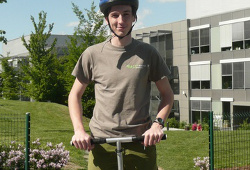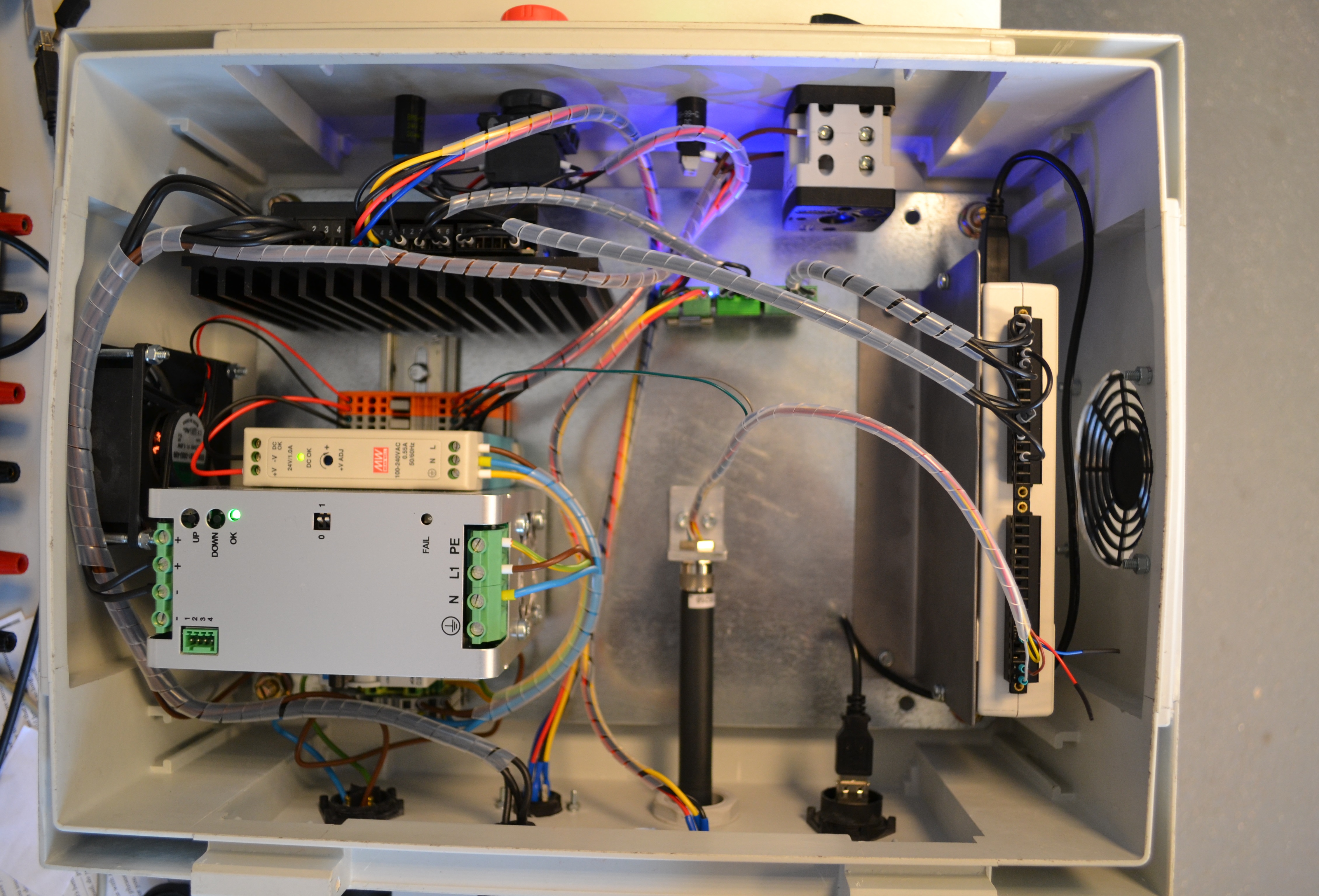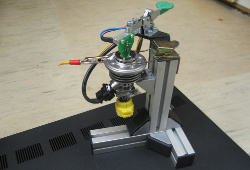Mechatronics Laboratory (MechLab) focuses on all the important aspects of mechatronics, such as modeling and simulations, system identification, microcontroller programming, signal processing, embedded systems design etc. We use modern hardware and software tools for modeling, simulation, and programming (MATLAB/Simulink, dSPACE, NI LabVIEW, Xilinx).
We can solve kinematics and dynamics problems, design and produce DPS or entire industrial data logger, we can program micro-controlling unit or FPGA. We are strong in the capability of implementing a comprehensive industrial project. We specialize in Rapid Control Prototyping and HIL (hardware-in-the-loop simulations).
MechLab allows students to acquire practical experience with real mechatronic systems (hands-on). Within a practical training or during the work on their thesis, students practice computer control of a DC motor, a throttle valve of a car, or a helicopter model. Students gain valuable knowledge and experience which are not covered by theory or computer simulation.
We participate research projects in the fields of kinematics and dynamics modeling, nonlinear systems control with applications in automotive industry, electromechanical systems diagnostics, and embedded systems design.
We apply the experience gained both in research and education in the projects for our industrial partners. We cooperate with Škoda Auto, Robert Bosch, UNIS, ŽĎAS, Alucast, Honeywell. We have provided several various types of unique laboratory devices for product and process testing, measurement and data logging.
Here is a list of some educational or research projects and the results of cooperation with our industrial partners.

A self-balancing vehicle is an ideal example that demonstrates many mechatronic principles. It includes mechanics, electronics, and an electric drive with computer control. A “clever” signal processing and the design of control algorithms provide the resulting functionality of the device.
The device is capable of simulating of acceleration up to 7 ms-2 , which matches with acceleration from 0 to 100 km/h in just 4s. The simulation is done by changes in the gravitational force vector direction, by tilting the test object of weight up to severals tens of kilograms. The whole device was developed in our laboratory with the cooperation of BOSCH in Č eské Budějovice and it has a declaration of compliance with the EU directives and standards.
The publication describes basic methods of task solving from the fields of kinematics and dynamics of multibody systems (MBS) with the stress on computer utilization. Theoretic explanation of matrix methods and algorithms are accompanied by numerous examples. Published by CERM in 2007, illustrations by J. Plšek.

In the cooperation with company Prototypa-ZM, s.r.o. a device for an artificial aging of ballistic vests was developed. Our laboratory was asked to develop the electrical part of the device, the software utility for PC and to cooperate in drives and sensors selection. The artificial aging is done at a clearly defined temperature and humidity conditions, in a slowly rotating drum for 10 days. The utility software for PC was developed in the LabView environment.
The subject of the book is based on several years of experiences with teaching the modeling in Simulink and SimMechanics. It focuses on theoretic principles, that are essential for successful mastering the SimMechanics, and subsequently on specific problems in the form of solved examples. Published by BEN in 2006.

The device prototype serves as a diagnostic unit of the diesel engines injection nozzle. Based on voltage, current and vibration measurements of the nozzle, the information about the period of opening and closing of the nozzle and other dynamic parameters of the system are obtained. The prototype was developed for the needs of Quality Control Laboratory RBCB/QMM4 of the Robert Bosch, České Budějovice.
We developed a wireless module for vibration sensing, in cooperation with ZKL company, to allow them a long-time monitoring of crankshafts vibrations on their large machines. The module is able to sense accelerations in the range of 1 – 1000 G and an integrated battery allows it to run for a year. The measured signal is transmitted to PC, where it can be further processed in a software developed in the LabView environment.
ESPOSA project focuses on turbine engines technologies for small aircraft up to 19 passengers. VUT, in close cooperation with UNIS, ensures the development of technologies and support in the field of modeling, fast prototyping of control systems, Hardware-In-the-Loop simulations, and automatic code generation from the environment of simulations tools.